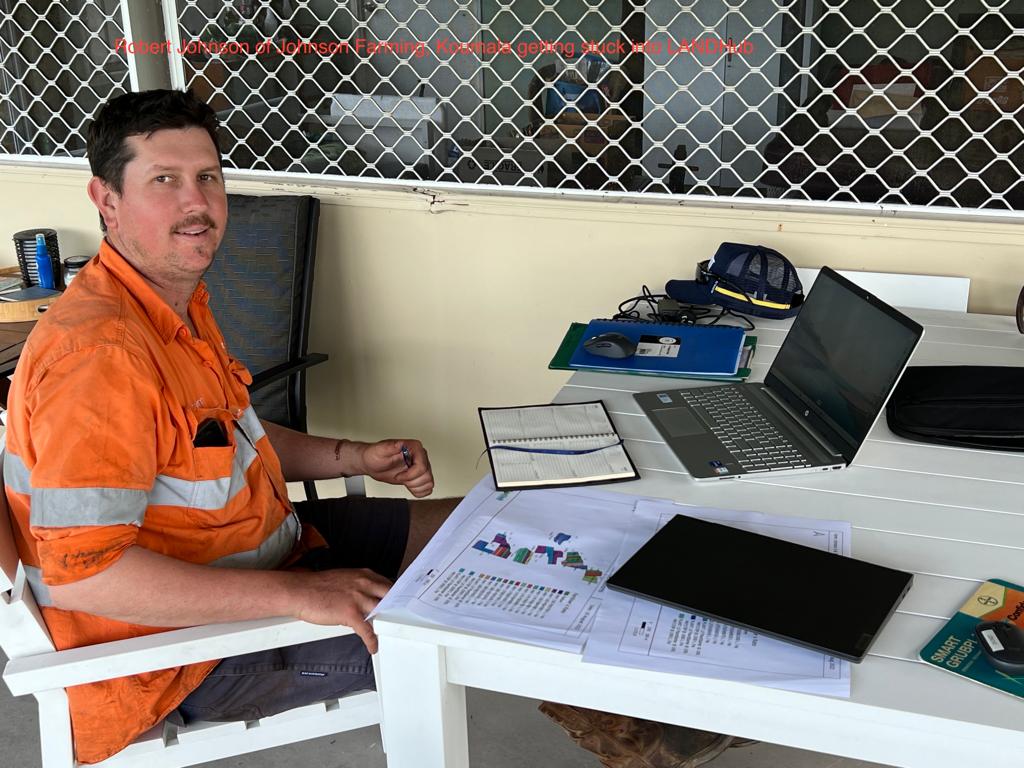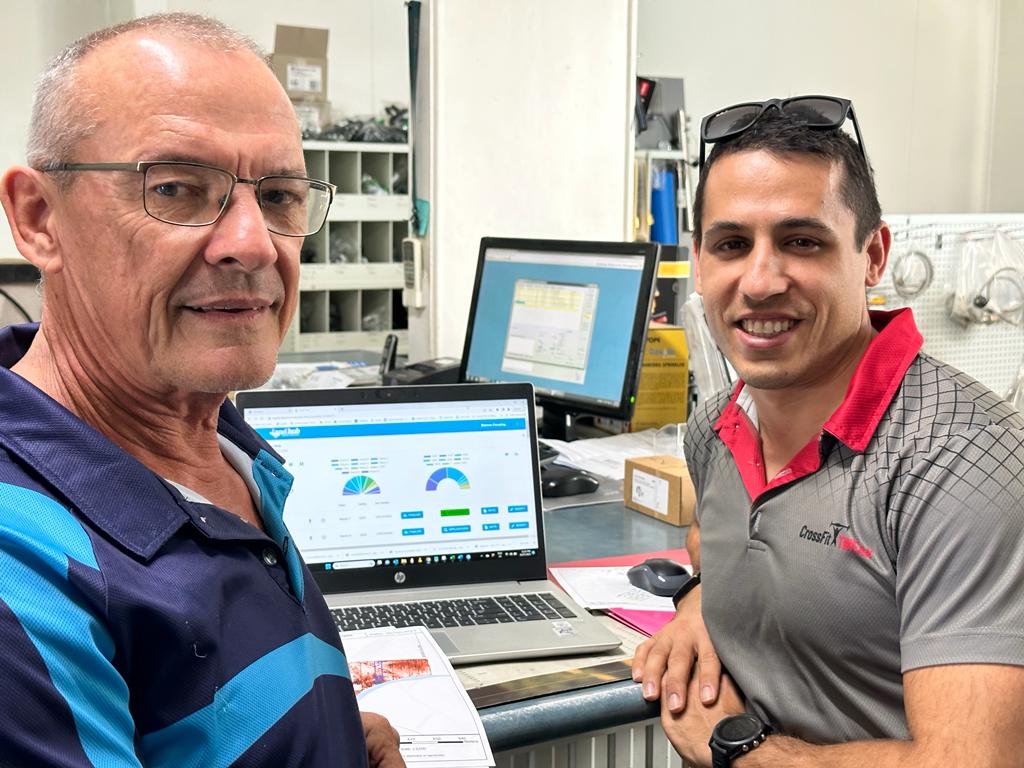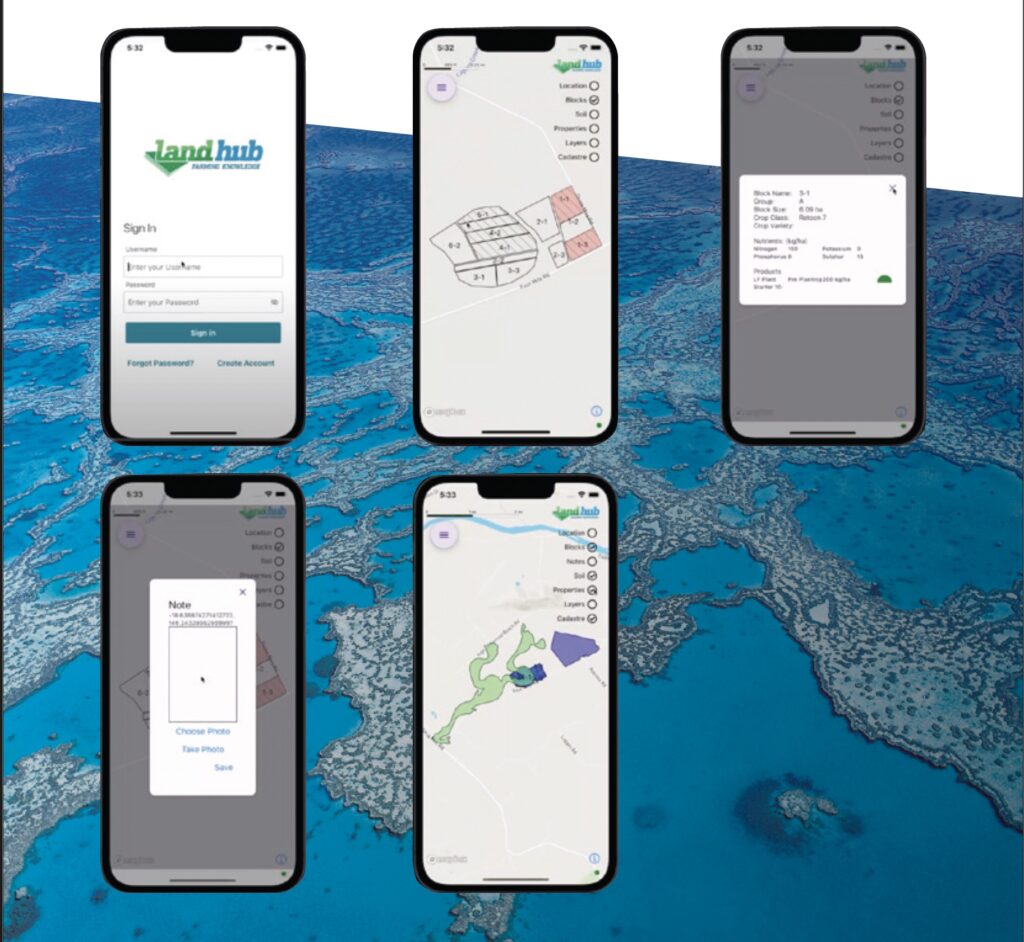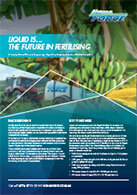GBRF Water Quality Land Hub Update - Oct 23
The LAND HUB Projects are part of the Mackay Whitsunday, Lower Herbert and Tully Johnstone Water Quality Programs, funded by the partnership between the Australian Government’s Reef Trust and the Great Barrier Reef Foundation, designed to improve water quality flowing off the land to the Great Barrier Reef by reducing the runoff of dissolved inorganic nitrogen.
Participating project growers from our three regions are starting to see improvements in productivity after developing optimised Nutrient Management Plans in LAND HUB. Three growers share their stories below.
Mackay & Whitsundays - The Johnsons
Scott and Trudy Johnson with sons Robert and Adam farm 150 hectares of sugarcane mixed with beef grazing north of Koumala in the Plane Creek Mill area on the Central Queensland coast.
The enterprise traditionally was beef cattle grazing. With gradual shift, sugarcane farming has formed a larger part of the business in recent years. Johnson Farming joined the LAND project in November 2021. Scott’s aspiration was to better understand the agronomy and cropping soil characteristics and to work to a whole-farm nutrient management plan. He sought to improve nutrient use efficiency for the farm, reducing costs where possible and address production constraints.
With business succession, Robert and Adam are taking on more of the management for the farming operations. They see the need to make more use of AG technology.
The farmed soil type is predominantly ‘Cherrytree’ sand or loam over sodic clay with smaller areas of ‘Leichhardt’ red, yellow, or grey loam or earth soils to the west of the property. Drainage on these soils is generally good, however, some areas of the farm are prone to waterlogging. Higher soil silt contents can result in compaction with farm traffic in wet conditions. Additionally, there are suspected soda patches which exacerbate pasture and crop growth constraints.
Farming is supported by a sound soil sampling regime and using Six Easy Steps guidelines. Soil phosphorus status is generally low. Soil Calcium levels tend to be low, and Aluminium is high in some samples. Soil nutrient levels vary significantly across the 47 blocks and soil types.
Crop nutrition has been based mainly on BioDunder liquid fertiliser blends. Where possible and product is available, Mill Mud has been applied to build up lighter soils.

Project Achievements to Date
As part of the LAND project the entire farm has been flown and imagery collated using Drone Deploy software. This is a valuable overview of the farmland, identifying possible constraints to production. Specific locations are earmarked for further soil sampling and investigation.
Soil survey with EM mapping across half of the farm area has also identified points of interest for further investigation.
Robert and Adam participate in an established Koumala young farmer group, where ideas and questions are discussed with occasional invited guest speakers for relevant topics.
Johnson Farming is using the LAND Hub software platform to collate soil test data and updated crop nutrient requirements. The fertiliser program is now a mix of BioDunder and other liquid fertiliser products. Within the nutrient management plan whole farm budget, Scott has strategically reduced nutrient input on older ratoons in some soil types. Results to date are good.
With advances in application equipment, when product is available, Mill Mud is now applied at less than 100 t / ha on to targeted ratoon blocks, banded on the row.
Future Goals
Robert and Adam seek to use GPS guidance for farming operations. They will undertake training to understand GPS technology and options when they make the financial outlay.
Tractor and machine guidance will assist in minimising the effect of soil compaction. Johnson Farming is keen to leverage the LAND Hub platform for whole farm nutrient management planning. As more definitive mapping and spatial resolution becomes available for their land they will go more into site specific management and nutrient inputs to best
address requirements. They see the importance on-going support for adoption of ag-tech and data management to ensure that farming continues to lead to a better environmental outcome.
Lower Herbert - The Blancos
Richard Blanco and his son Kienan chose to participate in the LAND program as they had a keen interest in data management for their farming business.
Richard is in the process of succession planning and moving the business management from his generation to that of his children. Kienan has examined profitability in precision farming and the potential savings that can be made.
The Blancos have recently expanded their land under management by 300 ha, and they now operate their farming business across 400 ha. Both Richard and Kienan also work full time jobs off farm, so time management is crucial.
LAND offered an all-in-one solution for fertiliser management on the Blanco’s farm, and the ability to maintain an up to date (live) plan and real time record keeping. This meant that there could be significant time savings in record keeping, meeting all the increased regulatory requirements faced by farmers in recent times. It also meant that all the information could be stored in one place with all parties having immediate access to that information, assisting with planning activities and being easily able to make changes on the fly that everyone could see.
The entire farm has been mapped via drone, providing multispectral imagery indicating crop health and water movement. The majority of the farm has also been mapped using the topsoil mapper providing EM (electromagnetic) data to identify additional changes in soil type and properties (this data is also available to view and use within the LAND platform). These variations were ground-truthed through intensive soil sampling with this year’s fertiliser plan encompassing the results obtained, creating a more soil specific, tailored nutrient plan.

Richard and Kienan have full access to the LAND Hub platform and the new LAND Grower App so they can record their applications and observations in the field and make real time adjustments where required.
“The LAND app removes the tedious nature of record keeping. No farmer wants to sit in the office at night writing out records of the all the jobs they did that day. Now it can be recorded at the click of a button, on your phone while you’re in the paddock; it is ideal.”
The changes to fertiliser rates informed through an in-depth analysis of soil and crop parameters indicates a potential DIN saving of over 2,000 kg/yr. It is important to remember that this sort of in-depth analysis comes at a high price (funded jointly by the project and the growers themselves). Fortunately, the data collected through EM mapping, drone mapping and intensive soil sampling for a farm will remain useful over many years.
Richard, along with numerous other farmers, is hoping that the LAND platform will take the next step and move towards incorporating chemical application management into the near future.
“Having a platform that can handle all aspects of the cane farming operation would be a huge win for the industry. The younger generation thrive on technology, and everyone can make use of easily accessible information for fast and efficient decision making.”

Tully Johnstone - Rob Donato & Russel Maifredi
Rob and Russell have been progressing well with their practice change journey, supported by LAND project Agronomist Leanne Carr and by LiquaForce’s Maurice Sheppard. Rob and Russell were involved in the design of the key requirements for the LAND Grower App, helping to define the priority functionality for in-field use. Following development of the app, the project team worked with Rob and Russell to refine the user experience. Both growers are very happy with the final version of LAND App and are excited about what it offers them in the field, saving time and improving the quality of record keeping.
Rob and Russell will be using their $2,000 incentives to pay for ameliorants such as lime, to enhance soil health to improve nutrient uptake. Both growers feel they have benefited from the grower education sessions on ways to improve soil health, and they now intend to put learnings into practice.
Rob and Russell have both taken up the opportunity to apply fertilisers using the variable rate applicator and have said they will definitely be using VRA again.
Both growers are very much focused on environmentally friendly practices and are impressed with the project outcomes overall so far. Rob is also committed to getting his children involved in agriculture, and he has been taking them on the practice change journey wherever possible.

LAND Grower App





